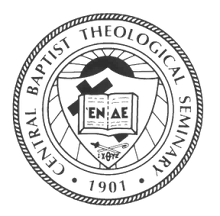Eastertide is the season when we more completely perceive that God is “making all things new”—including our understanding of Scripture. The time between resurrection and ascension, as recorded by Luke, is replete with the Risen Lord teaching the disciples. If they are going to be his witnesses to the “utter most parts, they will need to understand that a suffering Messiah is according to God’s purpose, and that repentance and forgiveness are to be proclaimed in the name of Jesus. In particular, he teaches them how his death and resurrection are the fulfillment of Scripture, and subsequently all biblical interpretation will find its true center in relationship to him. As Luke recounts: “. . . everything written about me in the law of Moses, the prophets, and the psalms must be fulfilled (Luke 24:44b).
Scholars have long pondered why certain texts became so central in the proclamation of the early Christian communities. Indeed, there are parts of the Hebrew Bible that are cited so often in the New Testament that we read them as messianic texts. C.H. Dodd’s classic little volume, The Apostolic Preaching and Its Developments, suggests that the gospel message at its heart is the death and resurrection of Jesus as the fulfillment of prophecy. This means that the whole of the biblical material, which came to be known as the Christian canon during the fourth and fifth centuries C.E., finds a center of gravity in the story of Jesus.
Currently my church is in that liminal time of searching for a new pastor, a vulnerable yet promising time for a congregation as it discerns its identity afresh. As the pastor search committee surveys the congregation about qualities in a prospective minister, some members offer the familiar refrain: “We want a pastor who will “preach the Bible.” Of course, what constitutes “preaching the Bible” may be as contested as what constitutes “good preaching.”
If asked (or I may put my two cents in anyway), this is what I would offer as a template for biblical preaching. Biblical preaching finds its grounding in the narrative of “word become flesh” that offers orientation to the whole constellation of biblical texts. We learn God’s intention for humanity as the image of the Triune God through God’s incarnation in Christ; we learn how to become the people of God through following the patterns of community set by Jesus; we learn of the purpose and redemption of creation through the story of death to life; and, we learn of the hope for continued life with God through the resurrected Lord. And there is so much more!
It is through the reality of One made after our likeness that we learn of God’s abiding Spirit who is conforming us to the image of God’s Son. Through the story of Jesus we learn of the outpouring of the Spirit and the creative generosity of God whose very life as Trinity is altogether gift. When “he opened their minds to understand the scriptures” (Luke 24:45), it was for faithful witness. It remains so today.
Molly T. Marshall
Central graduates students who are biblically knowledgeable and theologically articulate—surely what the church needs in our day. To learn more, continue visiting our website.

No comments:
Post a Comment